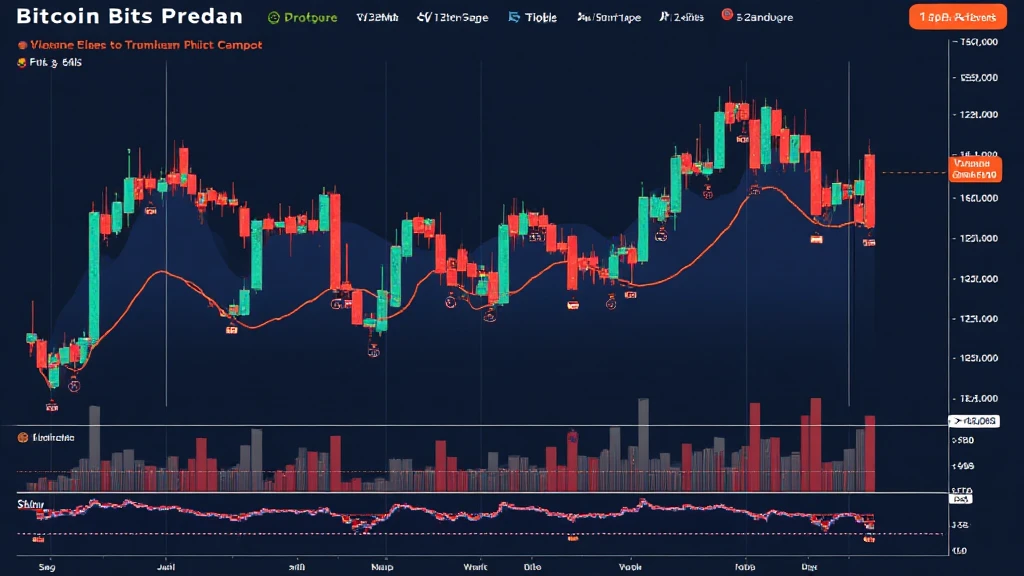Understanding Bitcoin Price Technical Analysis Using Volume Profiles
As the cryptocurrency market continues to evolve, tools and techniques for analyzing Bitcoin price movements are becoming increasingly critical for traders and investors alike. In 2024 alone, over $4.1 billion was lost due to various exploits in the DeFi space, highlighting the need for reliable analysis methods before making investment decisions. So, how can traders make better decisions using technical analysis?
This article aims to provide a comprehensive overview of Bitcoin price technical analysis focusing specifically on volume profiles. By the end, you will have a clearer understanding of how to use these insights to make informed trading decisions.
What are Volume Profiles?
Volume profiles are an essential tool in technical analysis, representing the amount of traded volume at specific price levels over a given period. They essentially reflect where traders are most interested in buying and selling Bitcoin.

In simple terms, think of a volume profile like a mountain range, where the height of each peak signifies how much Bitcoin traded at that price.
- High volume peaks indicate strong interest in that price level.
- Low volume indicates weak interest, suggesting a lack of support or resistance.
To take advantage of volume profiles, traders can identify potential support and resistance levels for Bitcoin!
Why Use Volume Profiles for Bitcoin Price Analysis?
Integrating volume profiles into your Bitcoin price analysis brings several benefits:
- Market Sentiment Insights: Understanding where most traders are putting their money helps gauge market sentiment.
- Trade Entry and Exit Points: Identifying strong support and resistance zones can provide better trade entry and exit points.
- Risk Management: By knowing where price levels have strong support/resistance, traders can set more effective stop losses.
As a case in point, let’s explore how the volume profile could aid in discerning market sentiment ahead of the upcoming Ethereum upgrade, which has implications for Bitcoin’s price as well.
Setting Up Volume Profiles in Your Trading Platform
Most trading platforms allow you to set up volume profiles easily. Here’s a step-by-step breakdown:
- Go to the charting section of your trading platform.
- Select the Bitcoin trading pair you are interested in.
- Add the volume profile indicator from the list of indicators.
- Set your time frame according to your trading strategy.
Once set, the volume profile will appear on your chart, providing a clear view of significant volume levels. Don’t forget to tweak the settings to adapt to market conditions.
Analyzing Volume Profiles for Bitcoin Trading
Now, let’s dive deeper into how to interpret the volume profiles for Bitcoin trading effectively:
Identifying Support and Resistance Levels
As stated earlier, high volume regions indicate likely support and resistance levels. When trading Bitcoin, observe the peaks on the volume profile indicator:
- If the price approaches a high volume area and starts to bounce back, it suggests strong support.
- If the price breaks through a high volume resistance level, this could indicate further price movement in that direction.
It’s essential to keep track of these levels while trading because they can act as strong predictors of future price movements.
Combining Volume Analysis with Other Indicators
For even more refined analysis, combine volume profiles with other technical indicators such as:
- Moving Averages: Determine entry points when the price crosses a moving average near significant volume levels.
- Relative Strength Index (RSI): Use volume profiles to confirm RSI signals, especially in overbought or oversold conditions.
Combining these indicators can improve your Bitcoin trading strategy and significantly decrease risk.
Limitations of Volume Profiles
While volume profiles provide valuable insights, they are not foolproof. Traders should consider these limitations:
- Volume profiles reflect past data; market conditions can change rapidly.
- They do not account for external factors like market news or regulations that may affect Bitcoin’s price.
Understanding these limitations can help you remain cautious and avoid over-reliance on any single metric.
Bitcoin Price Predictions for 2025
In the context of Bitcoin price analysis, many are looking toward 2025 for significant movement potential. The upcoming halving scheduled for 2024 could potentially disrupt market dynamics.
By analyzing historical price actions using volume profiles, many analysts believe Bitcoin could reach new all-time highs. Let’s take a look at some estimates:
| Scenario | Predicted Price |
|---|---|
| Conservative Estimate | $50,000 |
| Moderate Estimate | $75,000 |
| Optimistic Estimate | $100,000 |
According to several industry surveys, sentiment around Bitcoin remains bullish despite market volatility.
Localized Insights: The Vietnamese Market
Given Vietnam’s growing interest in cryptocurrencies, the **tiêu chuẩn an ninh blockchain** has become a hot topic among local investors. The country’s crypto user growth rate has been impressive, reaching a staggering 40% year-on-year.
As such, the need for effective analysis methods to protect investments is crucial. Implementing volume profiles can help Vietnamese traders navigate the market’s complexities.
Conclusion
In conclusion, mastering Bitcoin price technical analysis using volume profiles is essential for investors looking to make informed trading decisions. By effectively utilizing volume profiles, traders can gain insights into market sentiment, identify potential trading opportunities, and manage their risk effectively.
As you embark on your trading journey, remember to combine volume profiles with fundamental analysis and remain wary of the market’s unpredictable nature. For those interested in progressive trading strategies, exploring tools available at bitcryptodeposit could prove beneficial.
This information aims to educate and inform, but it’s essential to consult local regulatory authorities and perform due diligence before making any investment decisions.
Author: Dr. John Smith, a well-recognized expert in blockchain technology, with over 30 published papers in the field and a lead auditor for several major crypto projects.







